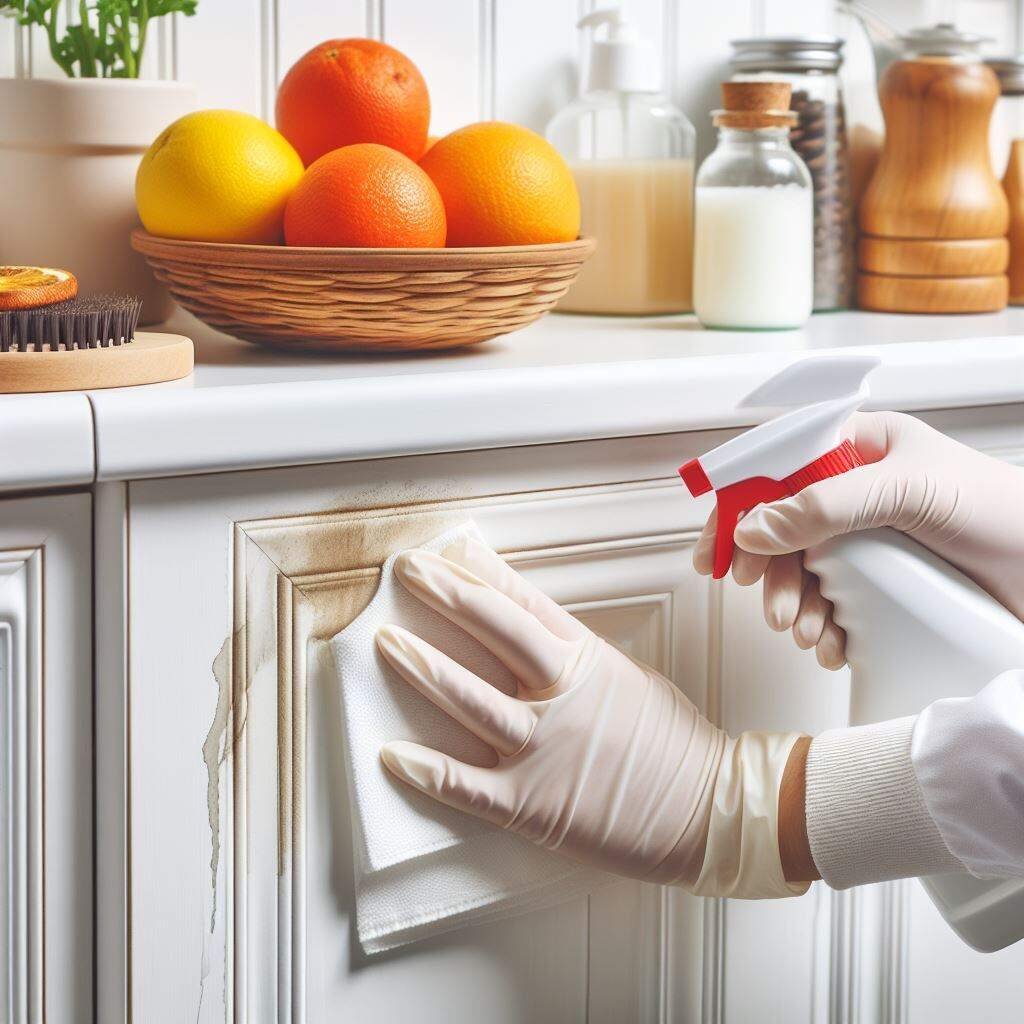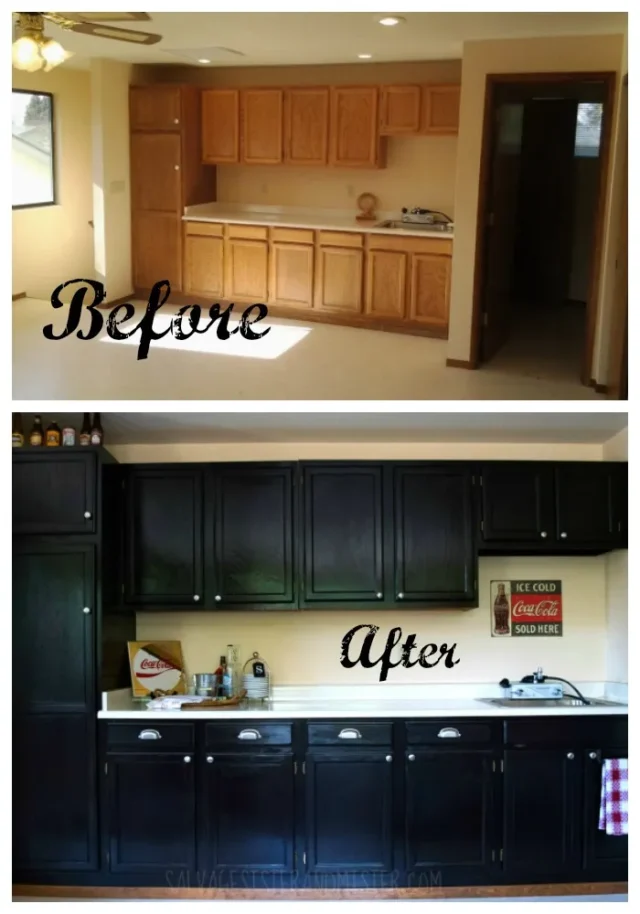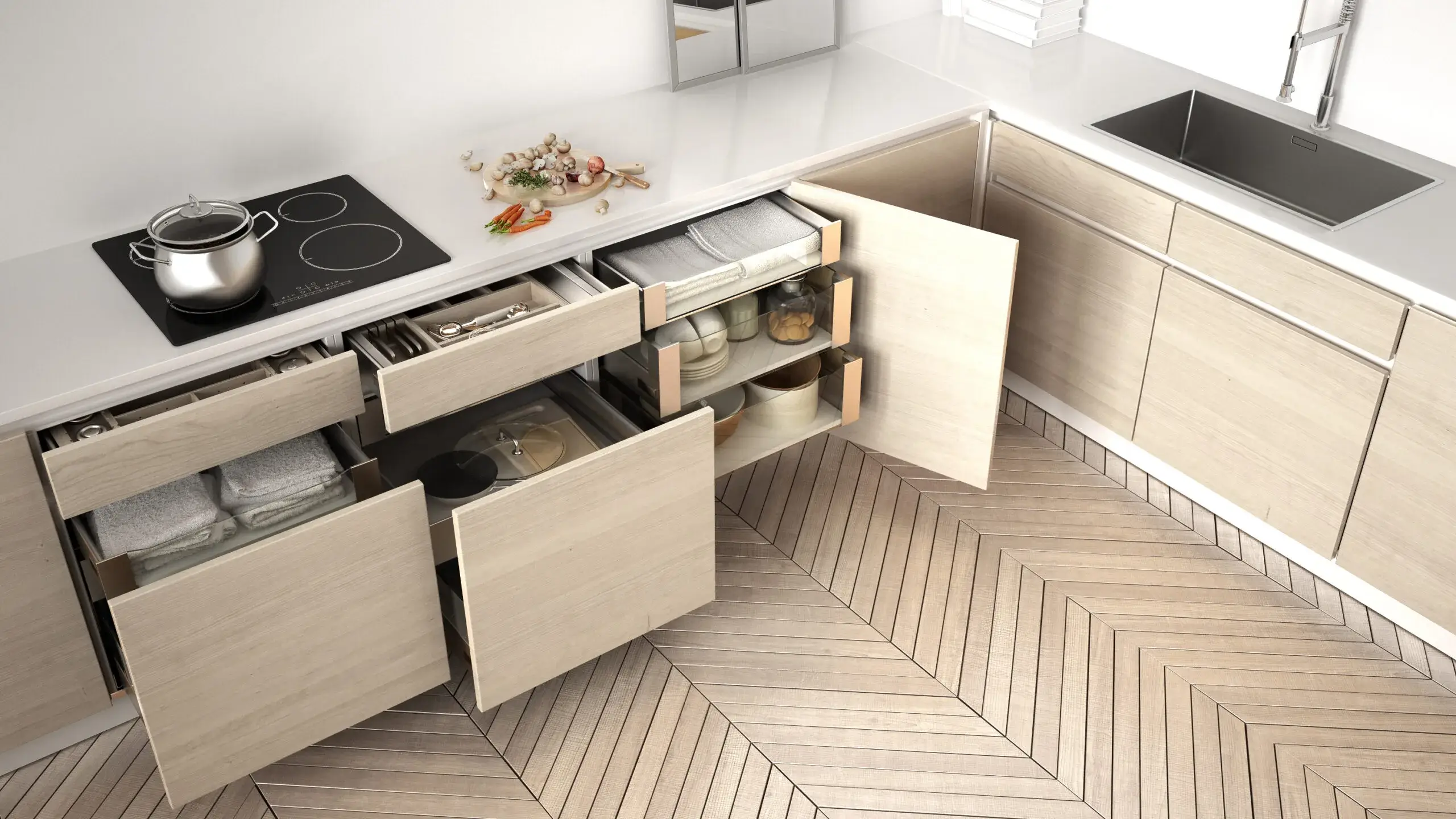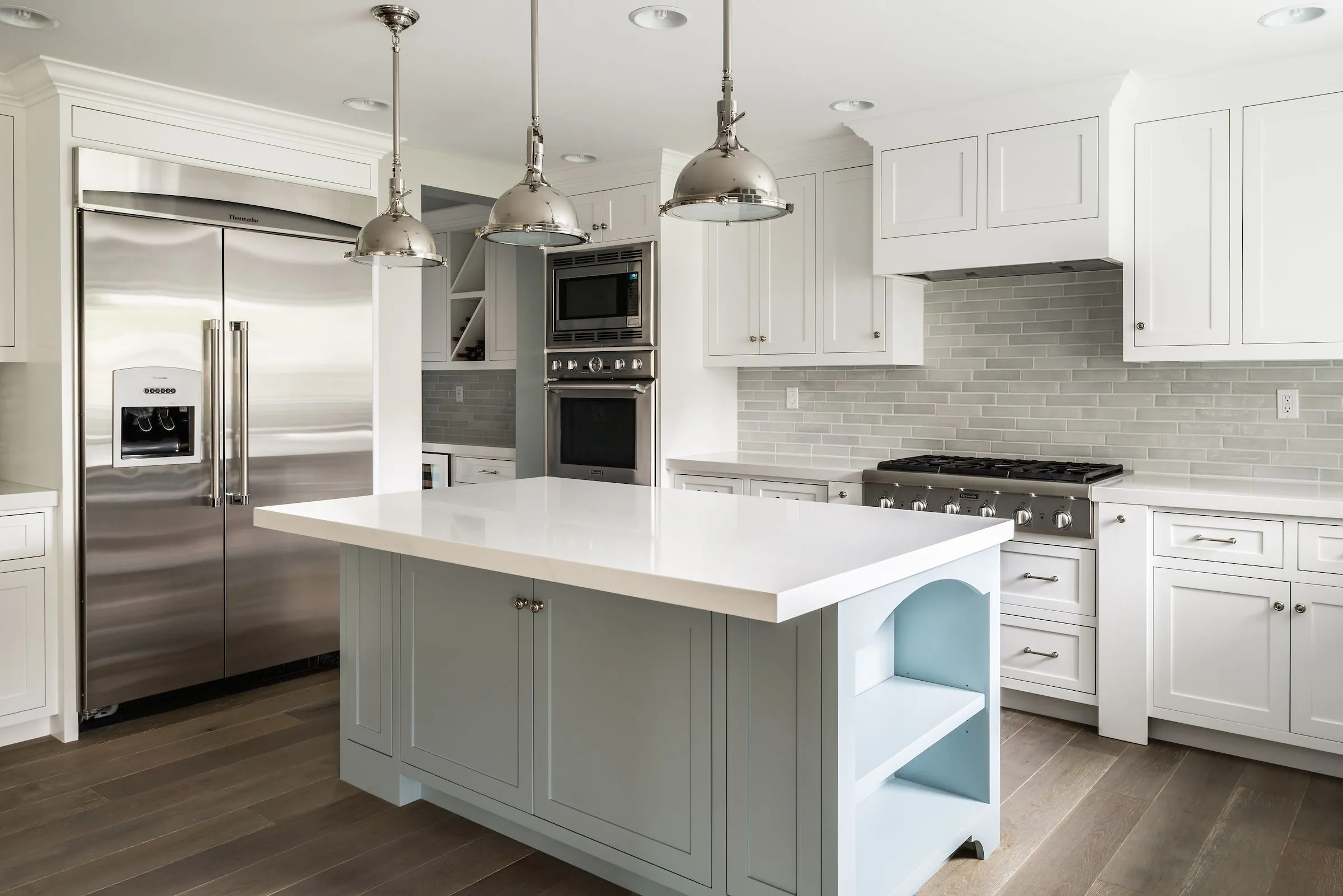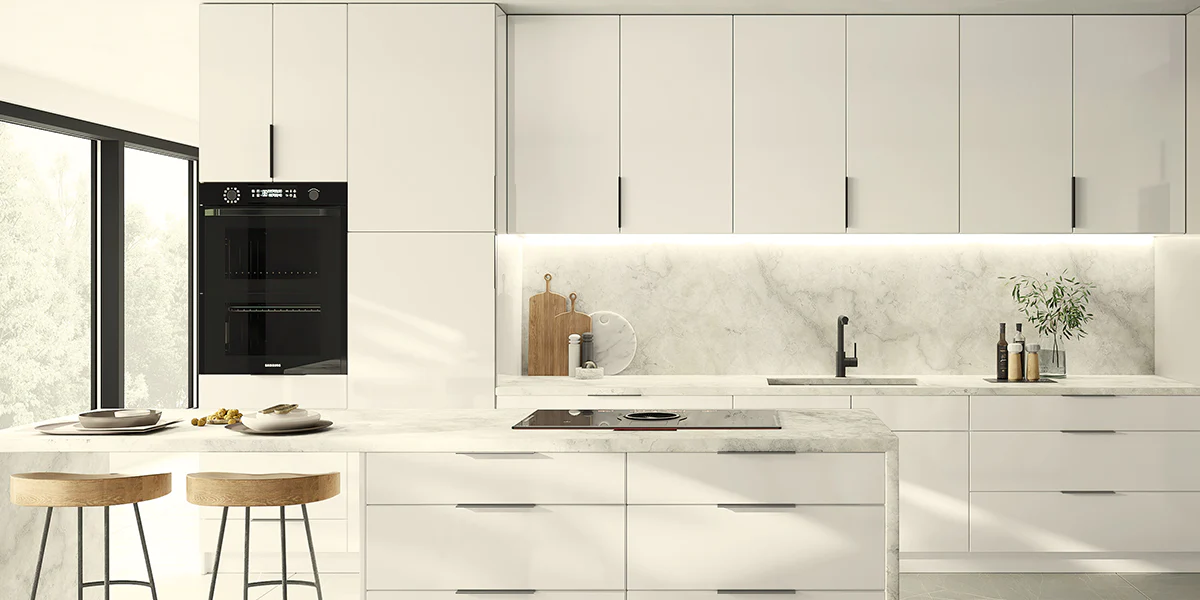When it comes to kitchen cabinet staining, there are a few things you need to keep in mind. This guide will walk you through the entire process, from preparing your cabinets to applying the final finish coat. By following these simple steps, you’ll be able to achieve beautiful and lasting results. As a homeowner, you’re always looking for ways to improve your home. One way to do this is by staining your cabinets. Not only will this make your kitchen look nicer, but it will also increase its value. So, if you’re thinking about giving your kitchen a makeover, keep reading. So, whether you’re looking to update your existing cabinets or give them a whole new look, read on for tips and advice on how to stain cabinets like a pro, various kitchen cabinets stain colors, and what is the best stain for cabinets:
What is a stain?
A stain is one type of finish applied to wood to alter or improve its appearance. Cabinet staining refers to the change of wood color or shielding it from harm. The stain is absorbed by the wood in the grain while maintaining natural wood characteristics.
What are the top kitchen cabinets stain colors?
There are a variety of kitchen cabinets stain colors you can pick to paint your cabinet. The best stain for cabinets is determined by your taste and the kind of wood that your cabinets are and the color currently used on your cabinets, and the overall scheme of the color of the room. The most well-known kitchen cabinets stain colors are:
Blonde
Brown
Black
White
Gray
Step-by-Step Procedure for Kitchen Cabinet Staining
It doesn’t require skills to paint your cabinets. Follow these easy steps for the perfect cabinet staining and change your old cabinets into new ones that you’ll enjoy for many years to come:
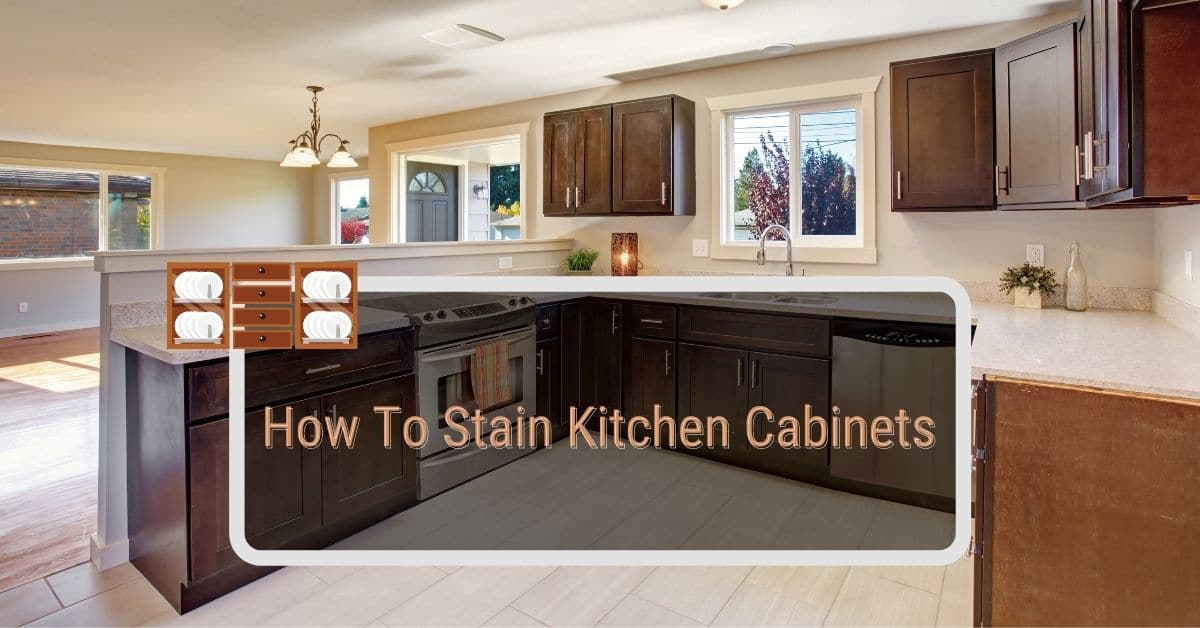
Step 1. Set up your space:
Before you begin cabinet staining, you must make sure your room is prepared to stop the stain from getting on any surfaces other than cabinets. Utilize drop cloths or plastic sheets to protect surfaces like your countertops and flooring and other parts of the space. Take out all furniture hardware and hinges before putting the doors of your cabinet aside.
Step 2. Clean your cabinets (if not already stained):
If your cabinets aren’t stained or painted, you will require extensive cleaning. You can clean them using a sponge and mild soap, then simple water to remove the soap remnants. If your cabinets have been painted or stained, particularly if you’ve used gel stain for cabinets you may avoid this step.
Step 3. Remove the existing finish from the cabinets:
There are two options to get rid of the stain off your cabinet. You could either sand it off or employ a chemical stripper. If you opt to send it away, we recommend utilizing the hand-sander of an electronic beginning with sandpaper that is heavier in grit followed by a second time using more fine sandpaper. A chemical stripper may aid in saving time and energy. However, you should pay for any warnings included in the project you are considering. Chemical strippers typically take approximately 30 minutes to be set. Once it’s installed, it will peel off with ease using the help of a scraper. Some easy-to-apply stains such as gel stain for cabinets are way easier to remove than the harder, more permanent ones.
Step 4. Use wood conditioner:
Before diving into the cabinet staining process, we advise applying the wood conditioner. This will ensure that the stain sticks evenly to provide the best results. Paintbrushes a thin layer of conditioner. Allow your cabinets to dry before scrubbing them lightly using steel wool.
Step 5. Apply the cabinet stain:
Make sure you choose the best stain for cabinets because that’s what matters the most. Now, the staining is underway. It is important to apply a thin uniform coating. If you notice a spot that appears darker than you’d like, you can use an old cloth to rub the stain away.
It could take a day or two to completely dry. After the stain has completely dried, you can determine whether you require an additional coat. So, if you choose to apply several layers of stain, make sure to scratch the cabinet surfaces using steel wool between coats lightly.
Step 6. Seal the cabinets (if needed):
If this happens for your stain, you will not need to do this step. You’ll need to seal your cabinets using polyurethane to protect them from daily wear and wear and tear for more traditional stains. So, apply the polyurethane onto dry cabinets using lengthy, interspersed strokes. To achieve the smoothest finish, you can sand the cabinets a second time after the seal is dry.
Step 7. Rehang the cabinet doors:
Once you’ve got the color you like and dry the paint, you can put up your cabinet doors and then reinstall the hardware. The only thing left is to admire the work you’ve done.
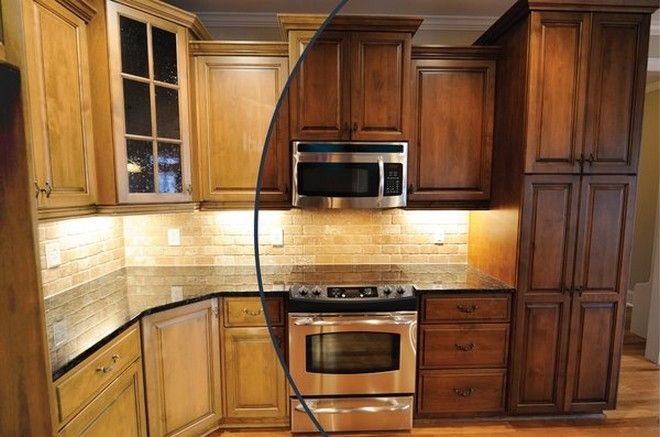
What Is the Best Stain for Cabinets?
There are many stains and finishes that you can apply to your cabinets made of wood. But what makes them different, and what are they all about? What is the best stain for cabinets that you can conveniently buy and easily apply? We will go over the essential differences between the various stains you can use in your woodworking projects.
1. Oil-based stain:
The stain made of oil is the most popular and best stain for cabinets you can come across. It is a favorite among DIY-minded homeowners. An oil stain is typically made from the oil of linseed. So, this kind of wood stain is very easy to clean, making it ideal for DIY projects where you’re not experienced with the entire process, and errors can be easily made. Otherwise, the two bases of the finish and stain could mix unexpectedly which can ruin the exterior and cabinets.
2. Varnish stain:
Varnish stain is a hard-drying paint and is difficult to apply if you’re not an expert in DIY projects at home. This kind of stain could display brushstrokes and subtle marks if you don’t apply it correctly, so it’s usually best left to professionals. Varnish stain can be tough to remove once placed on the wooden surface. Therefore be sure to choose the color and finish you genuinely love.
3. Water-based stain:
Water-based stain can be used to stain cabinets coated by a water-based polyurethane finishing. As you’ve probably guessed, water and oil don’t blend well, so make sure you match the stain type to the type of finish you want to use. The water quickly evaporates.
4. Gel stain:
Gel stain for cabinets isn’t the most well-known product in terms of wood finishes. That’s for sure. But, if you’re dealing with pine woods that tend to be prone to blotching or areas of discoloration in which the color isn’t correctly absorbed into the wood, gel stain for cabinets is a great instrument to aid. So, the texture of gel stain is that it soaks into the wood in a smooth and even way which makes gel staining an ideal choice for homeowners who have no experience in DIY projects.
5. Lacquer stain:
One of the well-known minor choices, lacquer, is rapid drying. One applies the lacquer, while another is behind them, quickly wiping the stain off.
Alongside being fast drying, lacquer is also very sour. The scent requires a lot of ventilation and airflow to disperse. In general, you should not play around with lacquer staining. So, if you’re not a professional or have a lot of experience in DIY, have another person who can assist you in the procedure.
What is the most durable finish for kitchen cabinets?
Okay, we’ve talked about topcoat finishes made of polyurethane. But which one do you need to choose? There are a variety of various finishes available on the result you’re looking for and how you’re familiar with working with wood. So, this is the main distinction between them:
1. Wipe-on polyurethane:
Wipe-on polyurethane is perfect for those just starting because there aren’t apparent drips or brush strokes while applying the product. Therefore, you can work quite haphazardly, and nobody is likely to discern.
2. Brush-on polyurethane
The name suggests that brush-on polyurethane needs an application brush onto cabinets, making it difficult for novices. So, if you put on this kind of topcoat incorrectly and improperly, you’ll be able to spot streaks of brush strokes and drips far more quickly.
3. Satin vs Glossy finish
Satin-finished cabinets have fewer glares and a more subtle luster, whereas gloss-finished cabinets will be shiny and noticeable in the space. So, based on the space you’re working in, the doors of your cabinets could work with glossy or satin polyurethane. Talk to an interior designer for advice if you’re unsure whether you should go for cabinet staining or finishing for your appearance.
Conclusion:
The kitchen is the heart of your home. It’s the place where you cook, eat, and spend time with your family. A beautiful kitchen deserves a fresh look that reflects its importance in your life. You can achieve this by staining cabinets to match your space or decorating them differently for an updated feel without spending too much money on new ones. We provide professional cabinet staining & refacing services at competitive prices so get in touch today.
FAQ's
When it comes to stain color, most homeowners want something that will match their kitchen’s interior design. However, this doesn’t mean they have to stick with the same color throughout the kitchen. Many different colors can be used to match various parts of the kitchen. Some popular choices include: black, white, red, brown, and beige. Whatever your décor style may be, there is a stain color that will match it.
There are many different cabinet colors to choose from. The most popular colors include black, white, maple, and oak. One of the colors listed above is a good option if you’re looking for a cabinet that will fit in with your home’s style. You can also choose a color that will complement your other furniture in the kitchen.
There are a variety of stains available to choose from when it comes to kitchen cabinets. Some of the most popular stains include granite, oak, teak, and mahogany. Each stain has unique characteristics that will affect the look and feel of the finished cabinet. Choosing the right type of stain for your cabinets to look nice and last for a long time is important.
It can be hard to decide whether to stain or paint your cabinets. The stain might look nicer for a while, but it could start to wear away over time. Paint might require more work initially, but it will last longer and look nicer in the end. Ultimately, it depends on what you’re looking for and what you think will work best for your cabinets.
To keep your kitchen cabinets looking new, you’ll need to use a stain that matches the cabinet’s color. There are many different stains to choose from, so you should be able to find one that suits your needs. Some popular stains include Cabinet Paint, Wood Stains, and Enamel Stains. You’ll need to apply the stain according to the manufacturer’s instructions. Once the stain is dry, you can clean it with a cloth or a vacuum cleaner.
Kitchen cabinets are a great way to add personality and style to your kitchen. They can also help you organize your kitchen and make it more functional. When it comes to choosing the right color for your kitchen cabinets, there are a lot of options available. There are many options, and it depends on your personal preferences. You can choose between shades of blue, green, black, white, and other colors. Whichever color you choose, be sure to accentuate it with some kitchen accessories in the same color.
There is a lot of debate on whether it’s better to paint or stain your kitchen cabinets. Some say painting them is the best option because they will last longer and be easier to maintain. Others say staining them is a better option because it gives the kitchen a unique look. Ultimately, it depends on what you want your kitchen to look like. If you want to paint it, staining may be a better option for you. But painting may be the better choice if you want to add some personality to your kitchen.
Yes, you can stain existing cabinets with a new color. If you have light-colored cabinets, use a lighter color stain. If you have darker cabinets, use a darker color stain. Be sure to test the stain on a small area first to ensure it is the right color for your cabinet.
There are many ways to stain cabinets. One way is to use a wood stain. Another way is to use a sealant. A third way is to use paint. Each of these methods has its advantages and disadvantages. It would help if you considered your specific needs to choose the best way to stain your cabinets.
Staining Kitchen Cabinets can be an attractive and cost-effective way to update your kitchen. However, a few things to consider before you stain your cabinets. First, is it worth it to stain your cabinets? Second, what type of staining should you do? Third, how often should you stain your cabinets? Fourth, what is the life expectancy of cabinet stain? Fifth, what are the risks involved with staining kitchen cabinets?
Many people think you have to sand cabinets before staining them, but this is not always the case. Sometimes sanding can damage the finish on the cabinet. If you decide to stain your cabinet without sanding it first, be sure to apply a sealer afterward to protect the finish.
Many different types of stains can be used on kitchen cabinets. Some of the most popular stains include wood, white vinegar, and enamel staining. Each type of stain will give your kitchen cabinets a unique look. Choosing the right stain for your cabinets is important, so they look their best.
If you want to change the color of your kitchen cabinets, staining them is a great option. You can use a stain similar to the cabinets’ original color, or you can choose a completely different color. If you stain the cabinets, make sure to sand them first so that the stain will adhere properly.
There are a few things to consider when staining cabinets. The type of wood, the grain, and the color are all important factors. The best way to stain cabinets is to use a pre-stain conditioner. It’s important to test the stain on a small cabinet before applying it to the whole surface. Once you have decided on the color, you can apply the stain to the cabinets using a brush or a rag. Make sure to apply the stain in the grain direction and wipe off any excess stain. Once the stain has been applied, you can add a topcoat to protect the finish.
There are a few different types of stains that can be used on kitchen cabinets, and the best one for your cabinets will depend on the type of wood they are made from. A gel stain will be a good option if your cabinets are made from a softer wood like pine. Gel stains are easy to apply and provide a nice, even finish. If your cabinets are made from a harder wood like oak, then an oil-based stain would be a better option. Oil-based stains penetrate the wood better and give your cabinets a richer, more natural color.
A good way to stain cabinets like a professional is to first sand the surfaces to be stained. Next, apply a thin coat of stain with a brush, working in the direction of the grain. Wipe off any excess stain with a clean cloth. Allow the stain to dry for at least two hours before applying a second coat if needed. Once the stain is dry, you can apply a coat of clear sealer to protect the finish.

